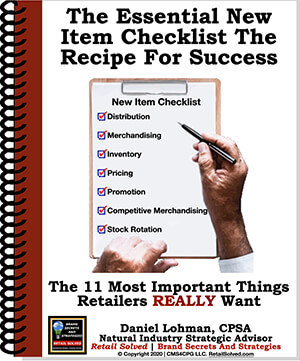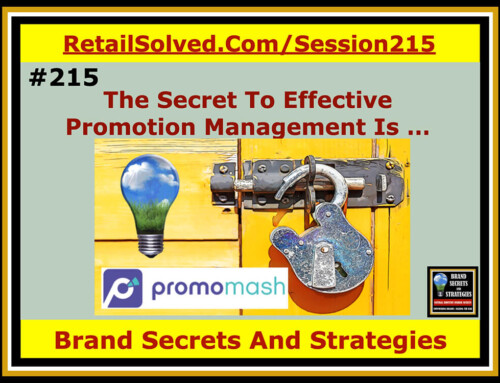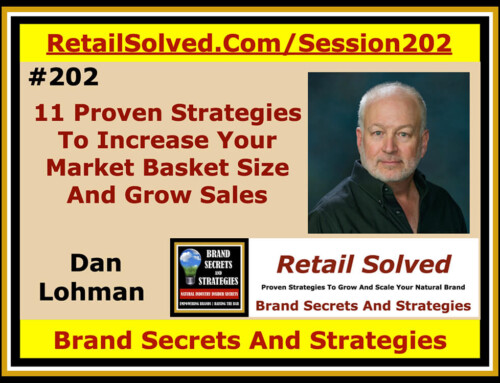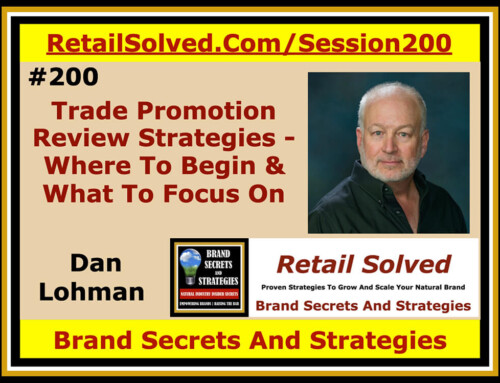Trade marketing is typically the single largest line item on a company’s income sheet, but how do you know if your trade marketing is effective?
Most promotions are ineffective and fail to encourage new shopper trials – the primary goal of every promotion. While rewarding loyal shoppers to make repeat purchases can prove beneficial, new shopper engagement is the key to growing brand sales. More importantly, effective promotions help retailers compete more effectively by driving shopper traffic into their stores and away from their competition. This is the greatest bargaining chip any brand can offer a retailer. Savvy brands leverage their ability to drive retailer sales when they negotiate with retailers for premium shelf space, incremental merchandising opportunities, etc. Here are eight strategies to help you maximize your trade marketing.
1. Creativity
Most companies repeat promotions annually in addition to copying competitor promotions. Companies that have creative strategies typically have greater success growing sustained sales. Effective promotions encourage incremental and impulse purchases. Co-promote within the brand and with complimentary items (such as chips and dip) when possible. The ultimate goal is to increase consumer purchases after the promotion ends. This occurs when new customers become committed loyal shoppers.
2. Purpose
Every promotion should have a well-defined and understood purpose. Design promotions around opportunities to build your brand such as important causes (Earth Day, back-to-school, etc) and product demos. Don't promote to give your product away. My favorite example is a large potato chip manufacturer that continually has BOGO's (buy one get one free) during the major sporting events and on holidays – occasions consumers would probably pay a premium. Category leaders should instead schedule deep promotions when category buying is low.
3. Consistent brand messaging
Most promotions fail to connect with the shoppers. Build a strategy around your consumer's specific needs and wants. Communicate a consistent message across all marketing vehicles by integrating sales strategies through different mediums including and especially social media.
4. Plan ahead
Be prepared to support the promotion by having additional product on hand. Use category management principles to accurately predict consumer takeaway and to identify the ultimate promotion price point. Out-of-stocks are a huge problem for some brands. Never miss a sale due to poor planning on your part. Also, a few cents off in either direction can dramatically affect consumer take away.
5. Strong brand building strategy
Promotions that don’t grow category and brand sales are a huge waste of resources and money. Set specific goals and objectives for each promotion, then evaluate promotions afterward to highlight successes and/or missed opportunities. Account for all costs including deductions, retailer fees, scan down rate, bill back, missed sales due to out-of-stocks, off-invoice rebates, menu fees, fixed costs, forward buys and miscellaneous costs when evaluating promotion effectiveness. Include retail, distributor, broker, and supplier execution in your evaluation.
6. Promotion schedule
Some companies have very predictable promotion schedules that train customers to purchase their brand only when they are on sale. While it's nice to reward consumers for being loyal, the goal of all promotions is to encourage shoppers to be loyal and to invite new customers to try your products. Learn your competitors' strategies and the effectiveness of their promotions. Build your strategy around their promotional efforts to maximize every opportunity to invite their shoppers to try your brand.
7. Efficient trade fund management
This can be one of the most difficult areas to effectively manage due to the complexity of differing retailer programs and systems. Identify and adopt systems that allow you to effectively manage trade spending, cash flow across simultaneous promotions at multiple retailers, promotion reconciliation, deductions, and promotion analysis and inventory movement throughout the supply chain. Integrate your system with retailer and market data to maximize your results.
8. Pay on scan
Promotions can be set up a lot of different ways. The most effective way to manage promotions and improve your ROI is to pay for what shoppers purchase. The way this works is to set up promotions that reimburse retailers for items scanned through their registers. This is far better than paying a lump sum and taking a chance that the retailer may not help you drive sales at every location.

Want A Competitive Edge? The Recipe For Success
New product innovation is the lifeblood of every brand. New products fuel sustainable growth, attract new shoppers and increase brand awareness. Know the critical steps to get your product on more retailer’s shelves and into the hands of more shoppers.
Empowering Brands | Raising The Bar
Ever wish you just had a roadmap? Well, now you do!
Don’t miss out on all of these FREE RESOURCES (strategic downloadable guides, podcast episodes, list of questions you need to be asking, and know the answers to, the weekly newsletter, articles, and tips of the week. You will also receive access to quick and easy online courses that teach you how to get your brand on the shelf, expand distribution, understand what retailers REALLY want, and address your most pressing challenges and questions.
All tools that you can use, AT NO CHARGE TO YOU, to save you valuable time and money and grow your sales today!
Image is the property of CMS4CPG LLC, distribution or reproduction is expressively prohibited.






